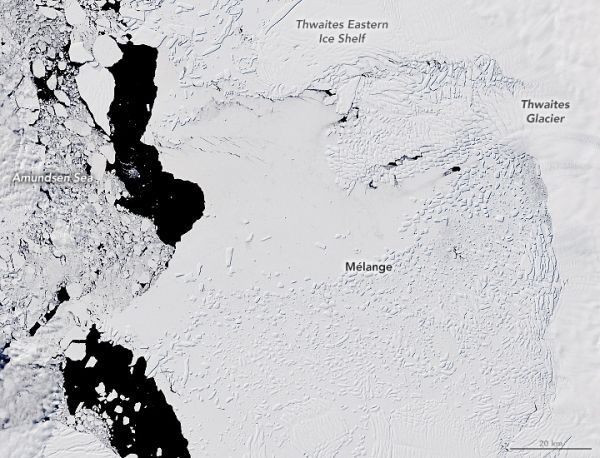Antarctica’s Thwaites Glacier has been in the spotlight in recent years, as scientists have undertaken a multi-part international project to study the vast glacier from all angles. The urgency stems from observations and analyses showing that the amount of ice flowing from Thwaites—and contributing to sea level rise—has doubled in the span of three decades. Scientists think the glacier could undergo even more dramatic changes in the near future.
This image pair demonstrates the changes that have occurred since the start of this century. The first image, acquired with the Enhanced Thematic Mapper Plus (ETM+) on Landsat 7, shows the glacier’s floating ice tongue on December 2, 2001 shortly before it calved iceberg B-22. The second image, acquired with the Operational Land Imager (OLI) on Landsat 8, shows the glacier on December 28, 2019.
Both images show the glacier where it exits the land in West Antarctica and stretches over the Amundsen Sea as thick floating ice. Ice that originates on land can raise sea level if it is delivered to the ocean at a faster rate than it is being replaced inland by snowfall. Indeed, Thwaites Glacier is one of the largest contributors to global sea level rise from the West Antarctic Ice Sheet. The flow speed of Thwaites has been increasing, while inland snowfall has not changed significantly.
Continue reading at NASA Earth Observatory
Image via NASA Earth Observatory


